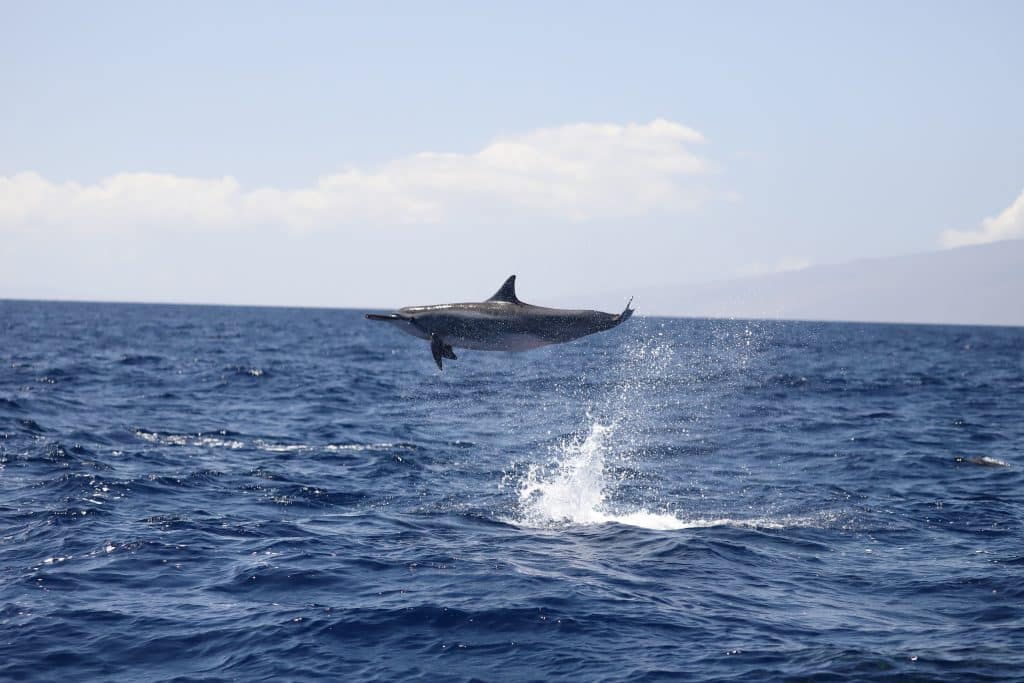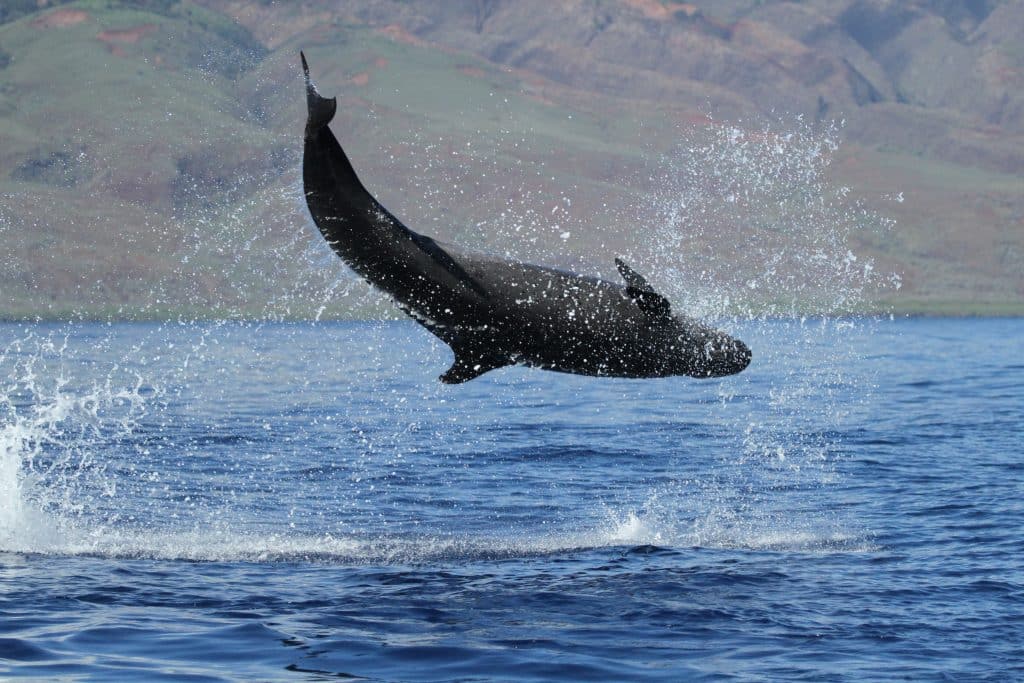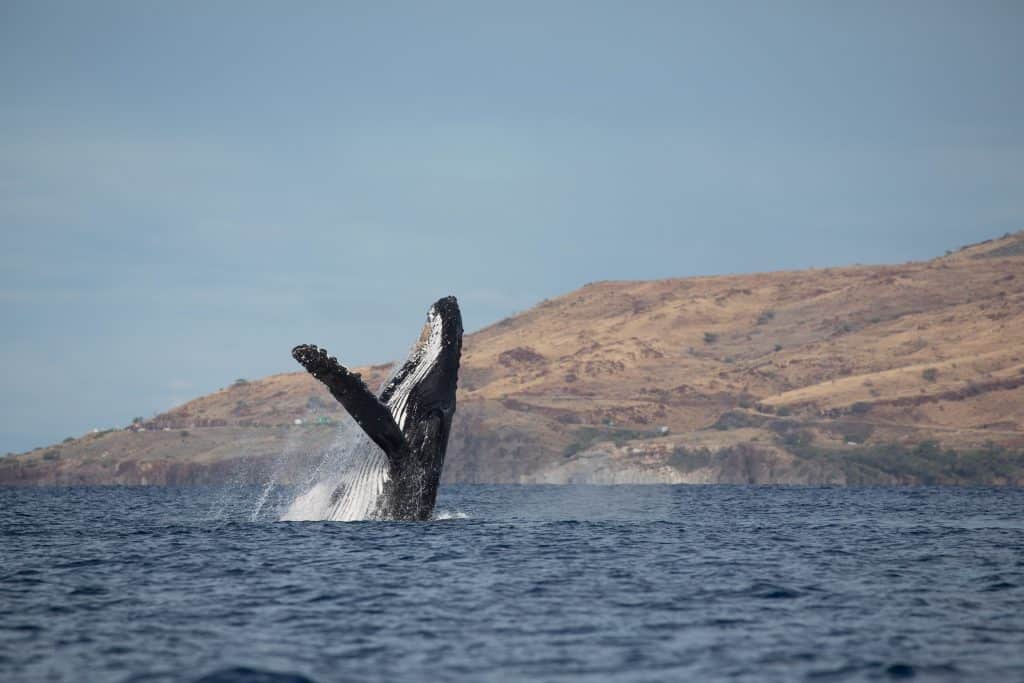Click to Read About Our Projects
Protecting Hawaiʻi’s Spinner Dolphins

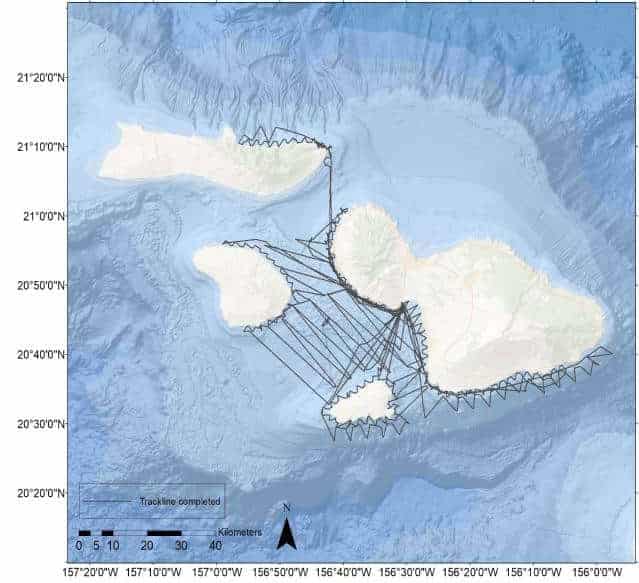
Spinner dolphins in Hawai‘i are under threat because of their unique daytime resting patterns that overlap with areas of high human activity. Using PWF research on spinner dolphins collected since 1996, we played a key role in setting a federal 50-yard approach limit, helping safeguard these dolphins.
Ongoing Research
We are currently surveying the population of spinner dolphins in Maui Nui to compare with past data. This research will reveal trends in their population and distribution, guiding effective conservation strategies and policies into the future.
Solutions from Research
Our research is focused on solving real-world problems, ensuring that it leads to meaningful change. We collaborate with scientific partners to influence local conservation efforts, promote responsible wildlife viewing, and advocate for policies that protect spinner dolphins and combat unsustainable tourism.
Spinner dolphins in Hawai‘i are under threat because of their unique daytime resting patterns that overlap with areas of high human activity. Using PWF research on spinner dolphins collected since 1996, we played a key role in setting a federal 50-yard approach limit, helping safeguard these dolphins.
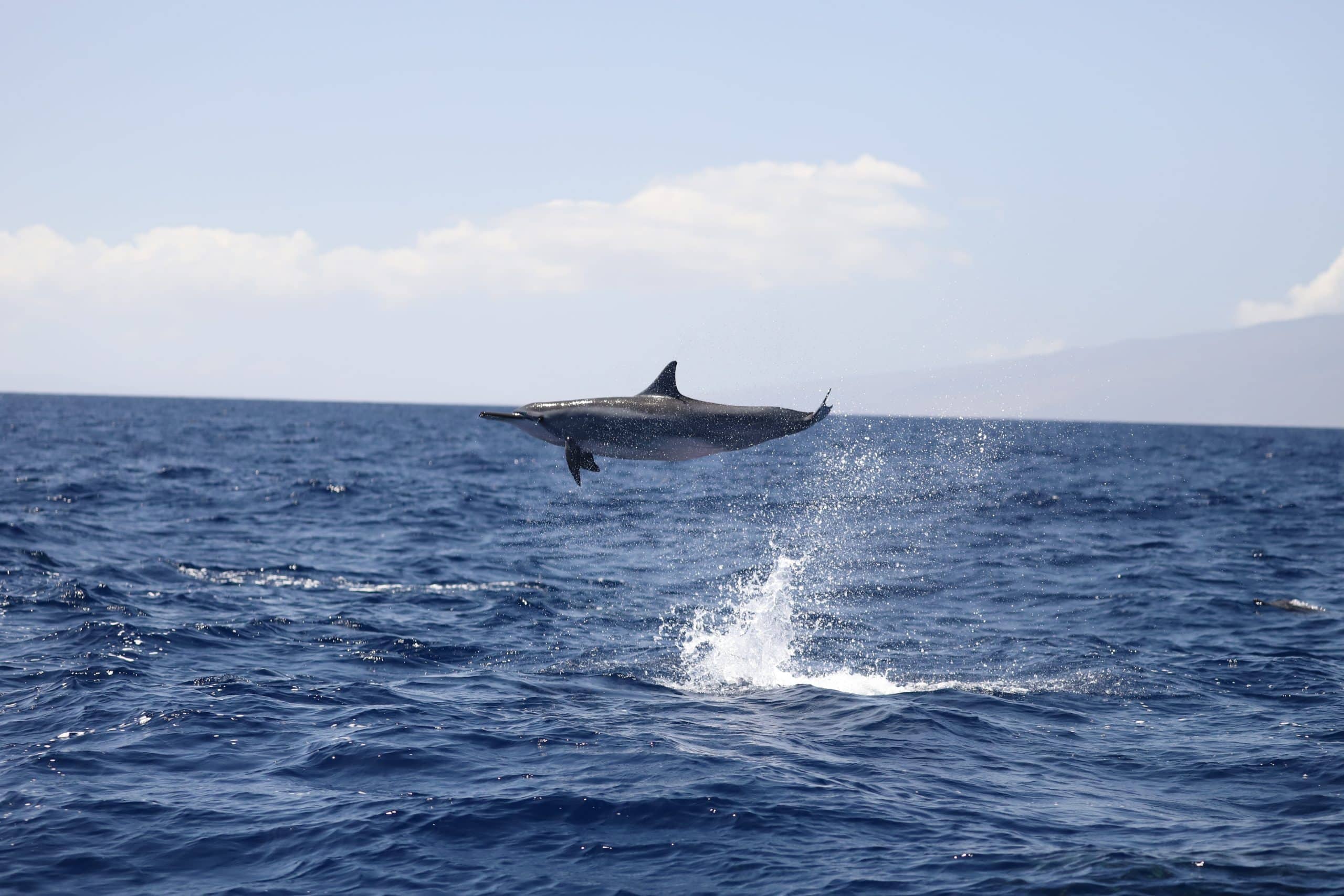
Ongoing Research
We are currently surveying the population of spinner dolphins in Maui Nui to compare with past data. This research will reveal trends in their population and distribution, guiding effective conservation strategies and policies into the future.

Solutions from Research
Our research is focused on solving real-world problems, ensuring that it leads to meaningful change. We collaborate with scientific partners to influence local conservation efforts, promote responsible wildlife viewing, and advocate for policies that protect spinner dolphins and combat unsustainable tourism.
Tackling the Crisis Facing Hawaiʻi’s False Killer Whales
False killer whales in Hawaiʻi are endangered due to fisheries bycatch and are facing an alarming decline. Recent population estimates, derived in part from PWF’s 25 years of monitoring data, indicate that fewer than 150 individuals remain. At the current decline rate of approximately 5-6 whales per year, this population could be extinct within 25 years.
Ongoing Research:
The ongoing decline is likely driven, in part, by competition for food with commercial and recreational fishing, which reduces prey and compromises the whales’ health. We monitor individual whale body condition via drone imagery and track their feeding behavior with biologging tags, helping us assess their energy needs and resilience to other threats.
Solutions from Research
Our findings have already informed federal recovery plans for these endangered whales. Through collaboration and the application of cutting-edge technology, we continue to provide crucial data to guide management decisions, helping to fill key knowledge gaps and drive effective conservation strategies.
- MMPA/NMFS Permit #27099
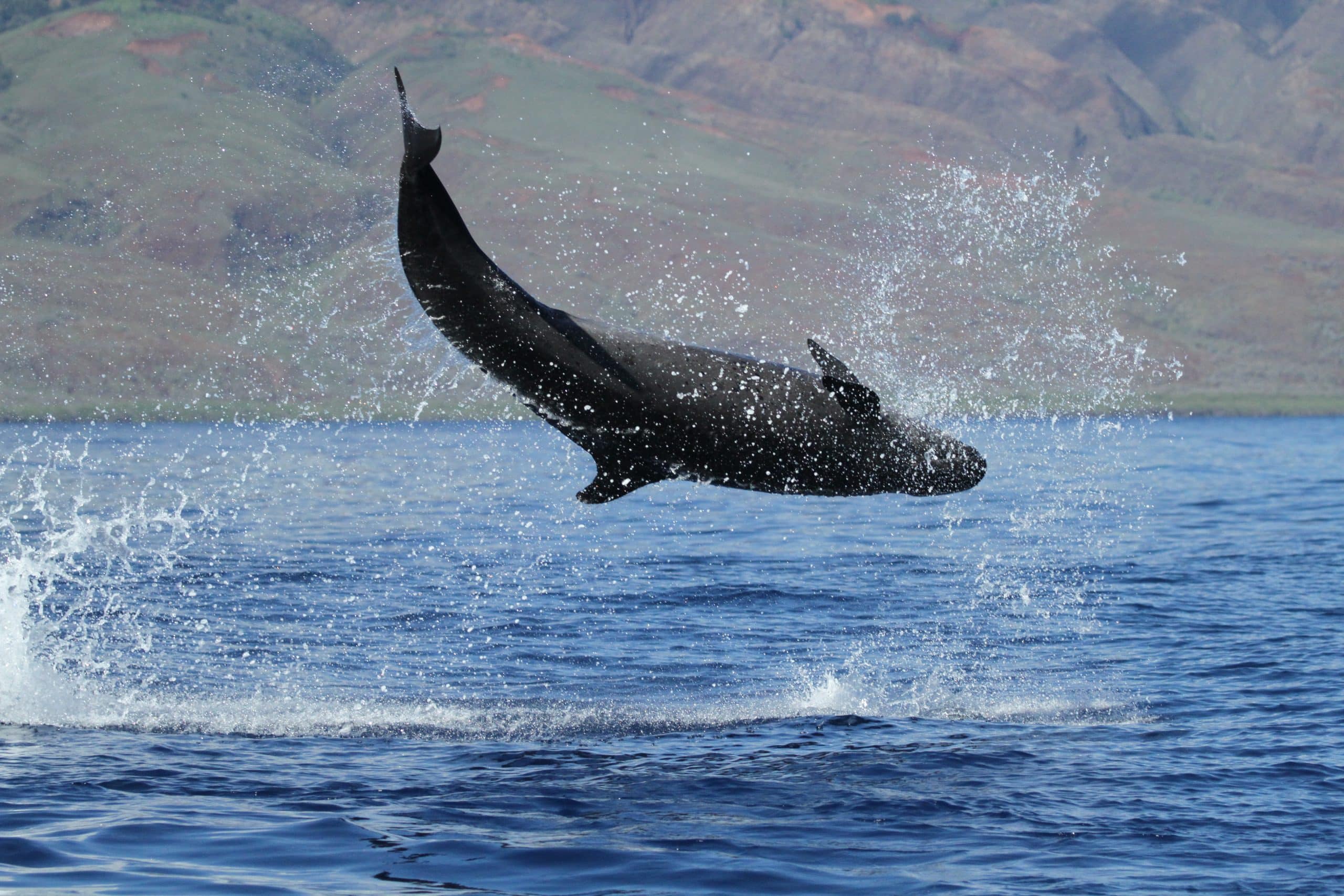
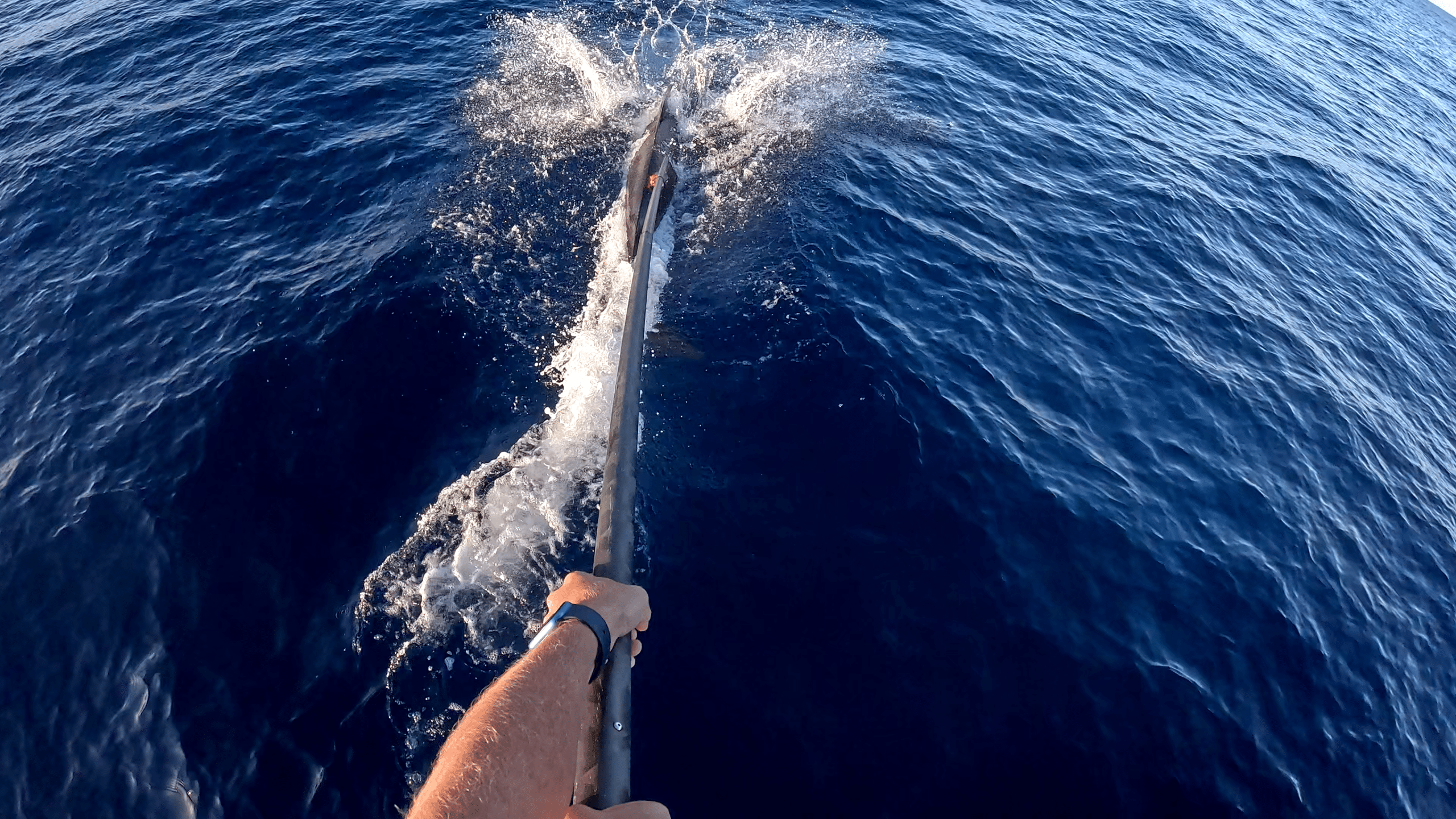
False killer whales in Hawaiʻi are endangered due to fisheries bycatch and are facing an alarming decline. Recent population estimates, derived in part from PWF’s 25 years of monitoring data, indicate that fewer than 150 individuals remain. At the current decline rate of approximately 5-6 whales per year, this population could be extinct within 25 years.

Ongoing Research:
In Ecuador and Chile, every sighting of these rare whales is crucial. Our team is conducting vital research on their genetics, toxins, and shifting range to better understand the threats they face and inform conservation efforts.

Solutions from Research
Our findings have already informed federal recovery plans for these endangered whales. Through collaboration and the application of cutting-edge technology, we continue to provide crucial data to guide management decisions, helping to fill key knowledge gaps and drive effective conservation strategies.
Safeguarding Humpback Whales and Their
Ocean Home
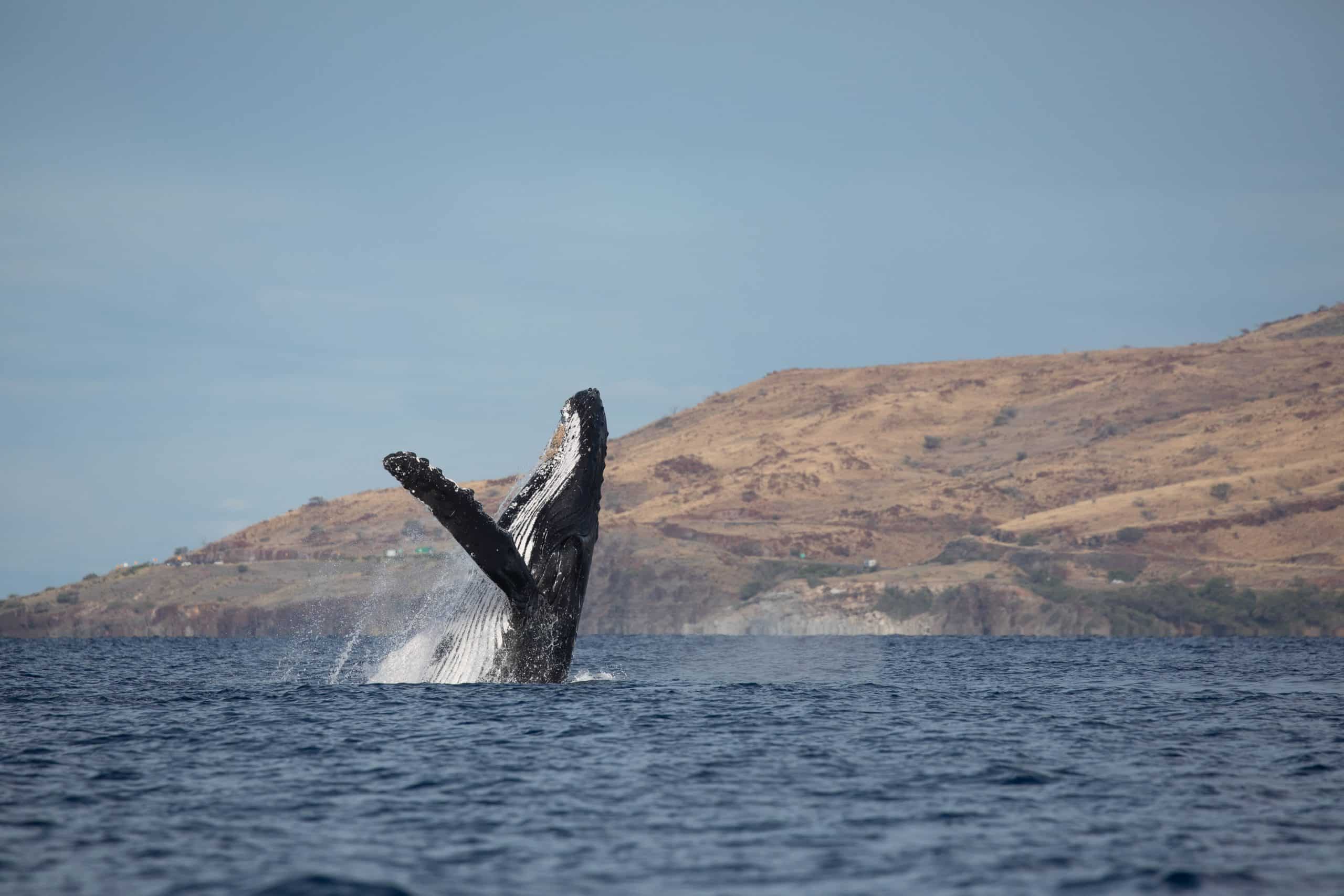
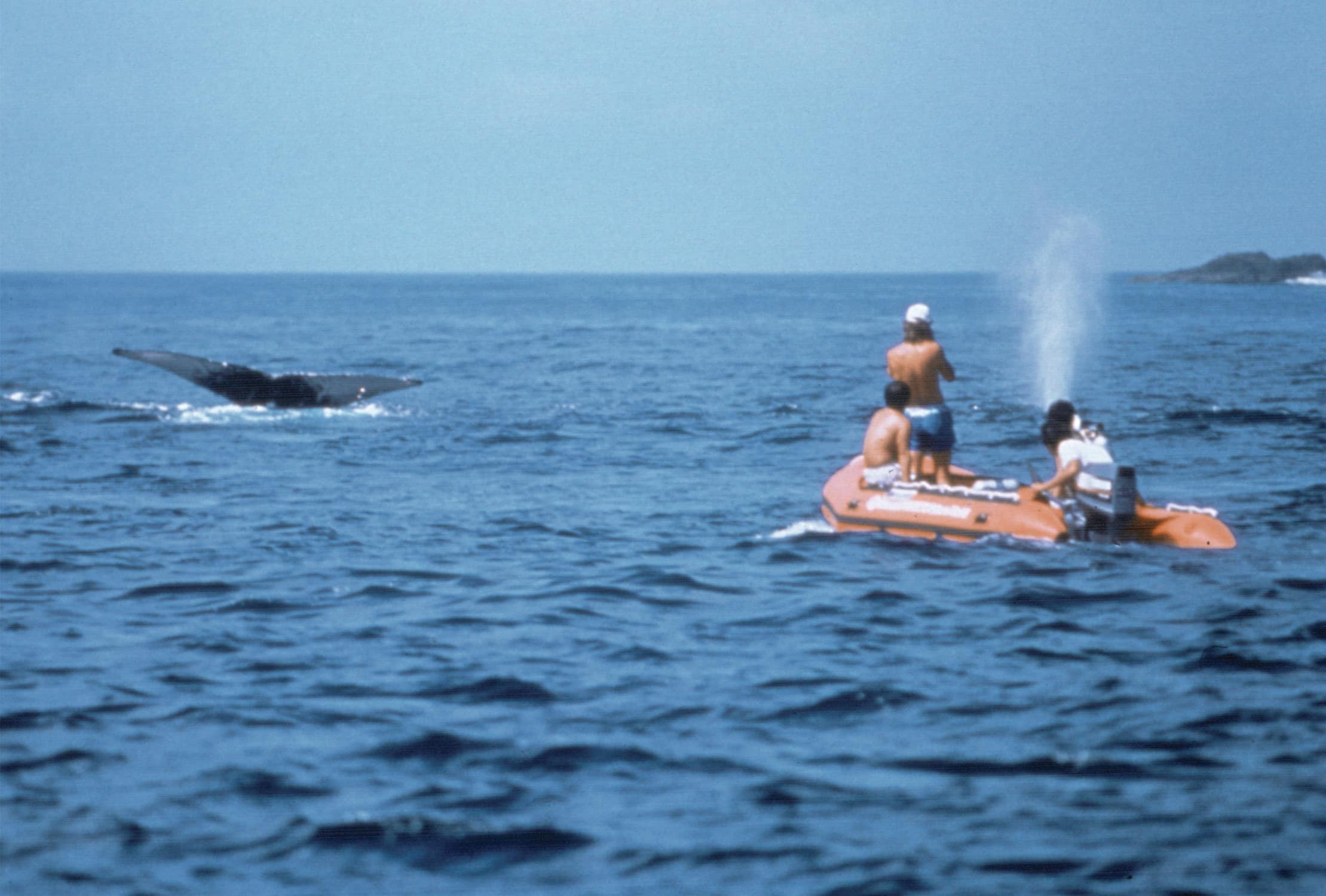
Humpback whales have made a remarkable recovery from the brink of extinction, but they continue to face significant threats. Despite their resurgence, the North Pacific population recently experienced a 20% decline in abundance, underscoring ongoing challenges.
Ongoing Research
Our current research focuses on recent trends in abundance of humpback whales migrating to Hawaiʻi, assessing scarring and body condition in Australia, and investigating pollutants in Ecuador. Across the Pacific, we are also examining the effects of vessel collisions, entanglement, and climate change on these whales.
Solutions from Research
Since our humpback whale research began – 1981 in Hawaiʻi, 1984 in Australia, and 2001 in Ecuador – we have built the largest photo-identification catalog of individual humpback whales in the Pacific. Our data played a key role in developing best practices for responsible tourism and vessel operations in Hawaiʻi and Australia, significantly reducing the impact on whale populations in those regions. We continue to monitor tens of thousands of whales across the Pacific to identify emerging threats and support the continued recovery of humpback whales.
- MMPA/NMFS Permit #21321
Humpback whales have made a remarkable recovery from the brink of extinction, but they continue to face significant threats. Despite their resurgence, the North Pacific population recently experienced a 20% decline in abundance, underscoring ongoing challenges.

Ongoing Research
Our current research focuses on recent trends in abundance of humpback whales migrating to Hawaiʻi, assessing scarring and body condition in Australia, and investigating pollutants in Ecuador. Across the Pacific, we are also examining the effects of vessel collisions, entanglement, and climate change on these whales.

Solutions from Research
Since our humpback whale research began – 1981 in Hawaiʻi, 1984 in Australia, and 2001 in Ecuador – we have built the largest photo-identification catalog of individual humpback whales in the Pacific. Our data played a key role in developing best practices for responsible tourism and vessel operations in Hawaiʻi and Australia, significantly reducing the impact on whale populations in those regions. We continue to monitor tens of thousands of whales across the Pacific to identify emerging threats and support the continued recovery of humpback whales.
Combating Marine Plastic Pollution’s Threat to Whales and Dolphins
Marine plastic pollution poses a severe risk to global marine ecosystems, harming whales and dolphins through debris ingestion and entanglement. In Hawai‘i, our research revealed that humpback whales are particularly vulnerable to entanglement, whereas common bottlenose dolphins face significant risks from ingesting plastic.
Ongoing Research:
In Ecuador and Hawaiʻi, our teams not only respond to whale entanglement incidents, but also investigate debris trends, identify problematic items, and assess their impacts to whales and dolphins.
Solutions from Research
Our findings are essential to reducing ocean plastic pollution. In Hawaiʻi, our research was instrumental in the Plastic Pollution Solutions program in collaboration with the County of Maui, and supported legislation such as Maui County’s ban on plastic disposable food ware. In Ecuador, our data will inform an ordinance on plastic use in collaboration with fisherman, tourism operators, and other local partners. Our work helps pinpoint the most problematic plastic and the whale and dolphin populations most threatened by this pollution, guiding conservation strategies to mitigate this growing danger.
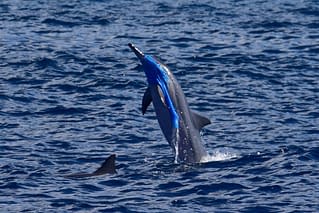

Marine plastic pollution poses a severe risk to global marine ecosystems, harming whales and dolphins through debris ingestion and entanglement. In Hawai‘i, our research revealed that humpback whales are particularly vulnerable to entanglement, whereas common bottlenose dolphins face significant risks from ingesting plastic.

Ongoing Research:
In Ecuador and Hawaiʻi, our teams not only respond to whale entanglement incidents, but also investigate debris trends, identify problematic items, and assess their impacts to whales and dolphins.

Solutions from Research
Our findings have already informed federal recovery plans for these endangered whales. Through collaboration and the application of cutting-edge technology, we continue to provide crucial data to guide management decisions, helping to fill key knowledge gaps and drive effective conservation strategies.
Protecting the Pacificʻs Most Vulnerable Whales and Dolphins
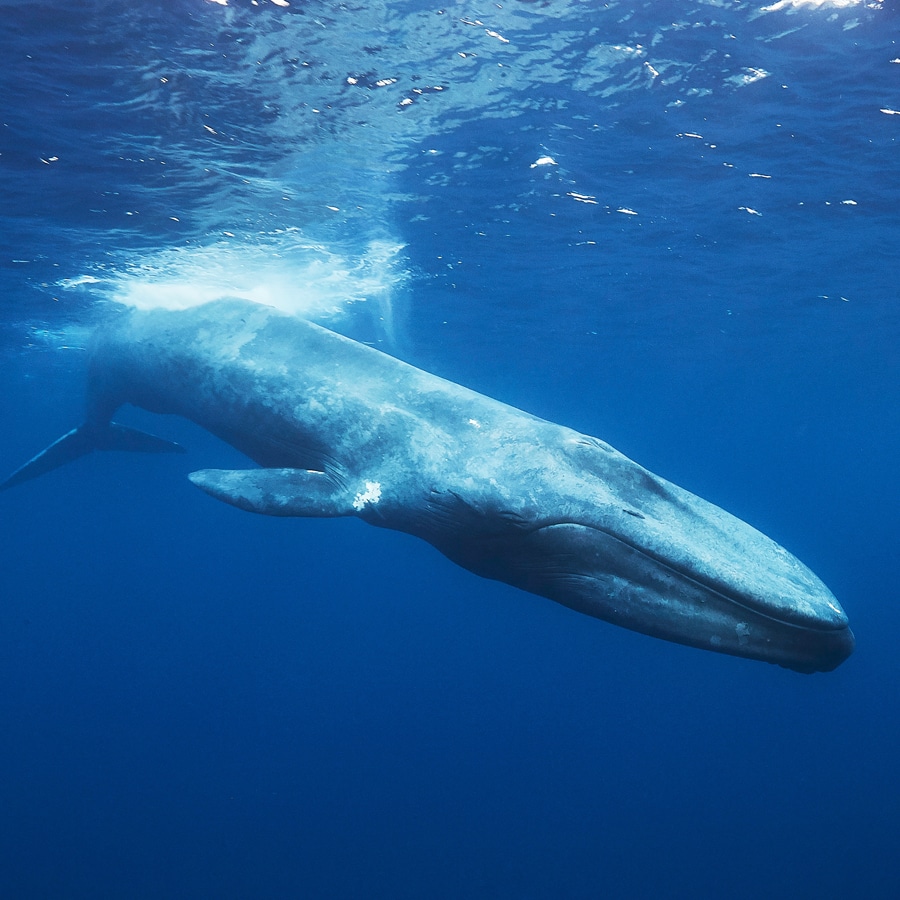
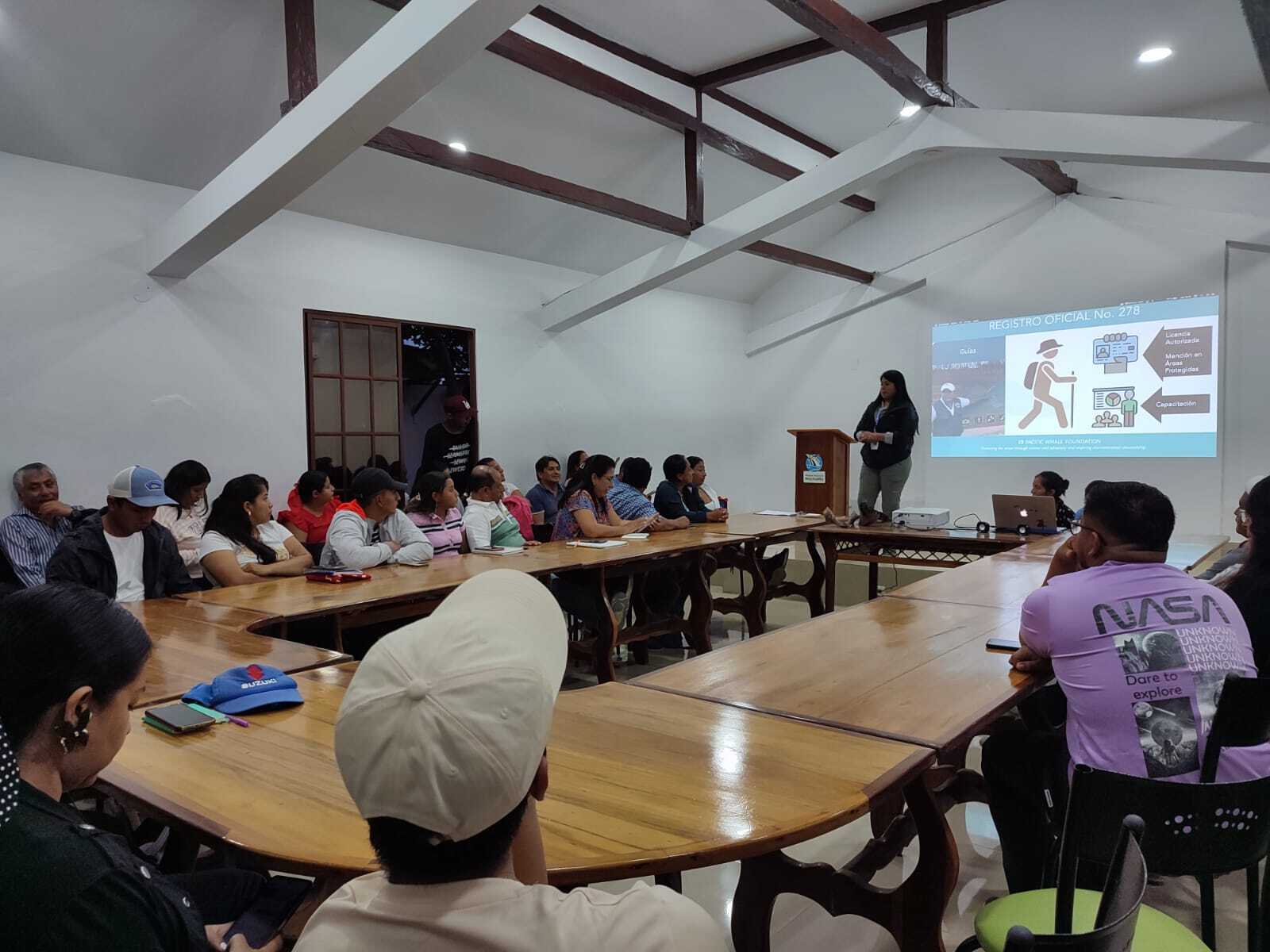
Despite recovery for some populations since the whaling moratorium, many whales and dolphins still urgently need our help. We focus on the Pacific’s most at-risk populations, such as the endangered false killer whale in Hawaiʻi, the threatened Australian humpback dolphin, and the critically endangered Chile-Peru southern right whales and the endangered Chilean blue whales in Chile and Ecuador. Alarmingly, recent data confirm their numbers continue to decline.
Ongoing Research
With only about 50 Chile-Peru southern right whales remaining, we prioritize reducing entanglements and vessel collisions, while collecting essential data on their genetics, toxins, and distribution. In Hawaiʻi, where fewer than 150 false killer whales remain, we’re studying their food availability amid competition with commercial and recreational fishing. Our abundance and distribution surveys are poised to make significant contributions to what little is known about the Australian humpback dolphin – a species that is exposed to high levels of human activity and is increasingly vulnerable to habitat loss and degradation, especially given the threat of climate change.
Solutions from Research
PWF was founded to support global efforts to end whaling and to protect vulnerable whale and dolphin populations. Today, PWF remains committed to advocating for whale and dolphin protection efforts at the International Whaling Commission, the largest global network dedicated to the conservation of whales. By collaborating with local communities, managers, and regulatory bodies, we ensure our research is aligned with the specific needs of at-risk populations, directly contributing to their recovery.
Despite recovery for some populations since the whaling moratorium, many whales and dolphins still urgently need our help. We focus on the Pacific’s most at-risk populations, such as the endangered false killer whale in Hawaiʻi, the threatened Australian humpback dolphin, and the critically endangered Chile-Peru southern right whales and the endangered Chilean blue whales in Chile and Ecuador. Alarmingly, recent data confirm their numbers continue to decline.

Ongoing Research
With only about 50 Chile-Peru southern right whales remaining, we prioritize reducing entanglements and vessel collisions, while collecting essential data on their genetics, toxins, and distribution. In Hawaiʻi, where fewer than 150 false killer whales remain, we’re studying their food availability amid competition with commercial and recreational fishing. Our abundance and distribution surveys are poised to make significant contributions to what little is known about the Australian humpback dolphin – a species that is exposed to high levels of human activity and is increasingly vulnerable to habitat loss and degradation, especially given the threat of climate change.

Solutions from Research
PWF was founded to support global efforts to end whaling and to protect vulnerable whale and dolphin populations. Today, PWF remains committed to advocating for whale and dolphin protection efforts at the International Whaling Commission, the largest global network dedicated to the conservation of whales. By collaborating with local communities, managers, and regulatory bodies, we ensure our research is aligned with the specific needs of at-risk populations, directly contributing to their recovery.
The last 50: Protecting the Critically Endangered Chile-Peru Southern Right Whales
Chile is home to a critically endangered population of southern right whales, with only about 50 mature individuals left. In 2023, PWF’s team recorded two calf deaths linked to human activity, marking a significant setback for the population’s recovery.
Ongoing Research:
In Ecuador and Chile, every sighting of these rare whales is crucial. Our team is conducting vital research on their genetics, toxins, and shifting range to better understand the threats they face and inform conservation efforts.
Solutions from Research
Leveraging PWF data, we’re advocating for stronger protections for the last remaining southern right whales in Chile. An unprecedented surge in large-scale aquaculture threatens the whales with habitat degradation, ocean pollution, and heightened vessel traffic. Our work is focused on driving meaningful change to safeguard their future.
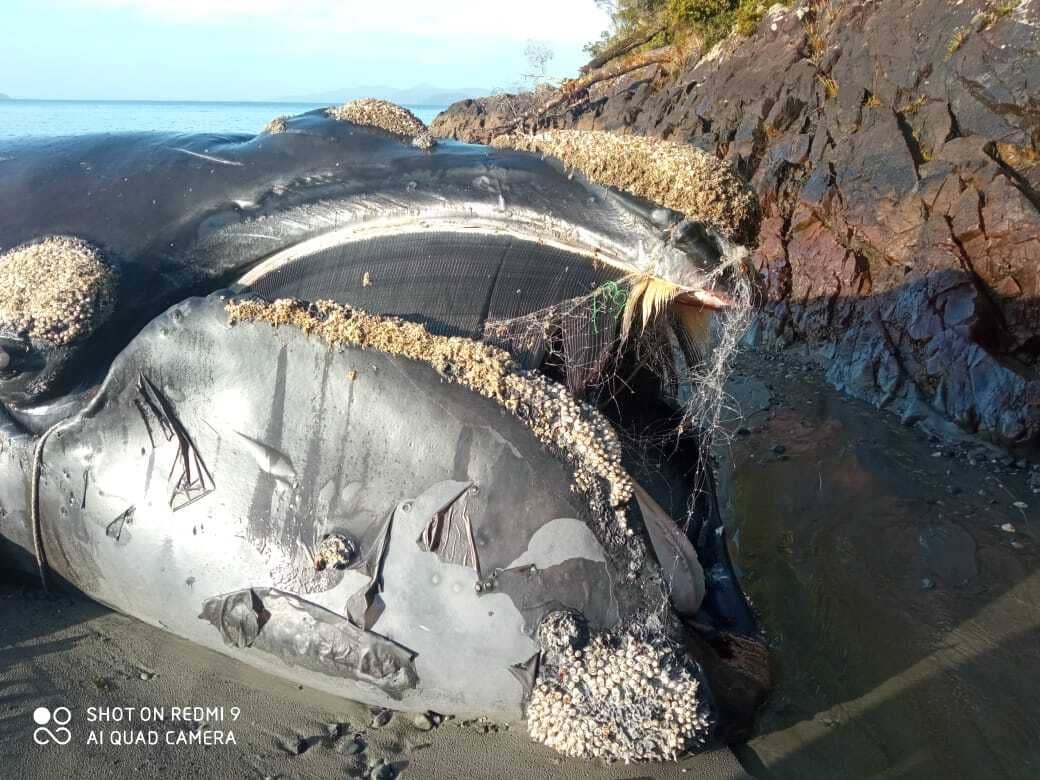
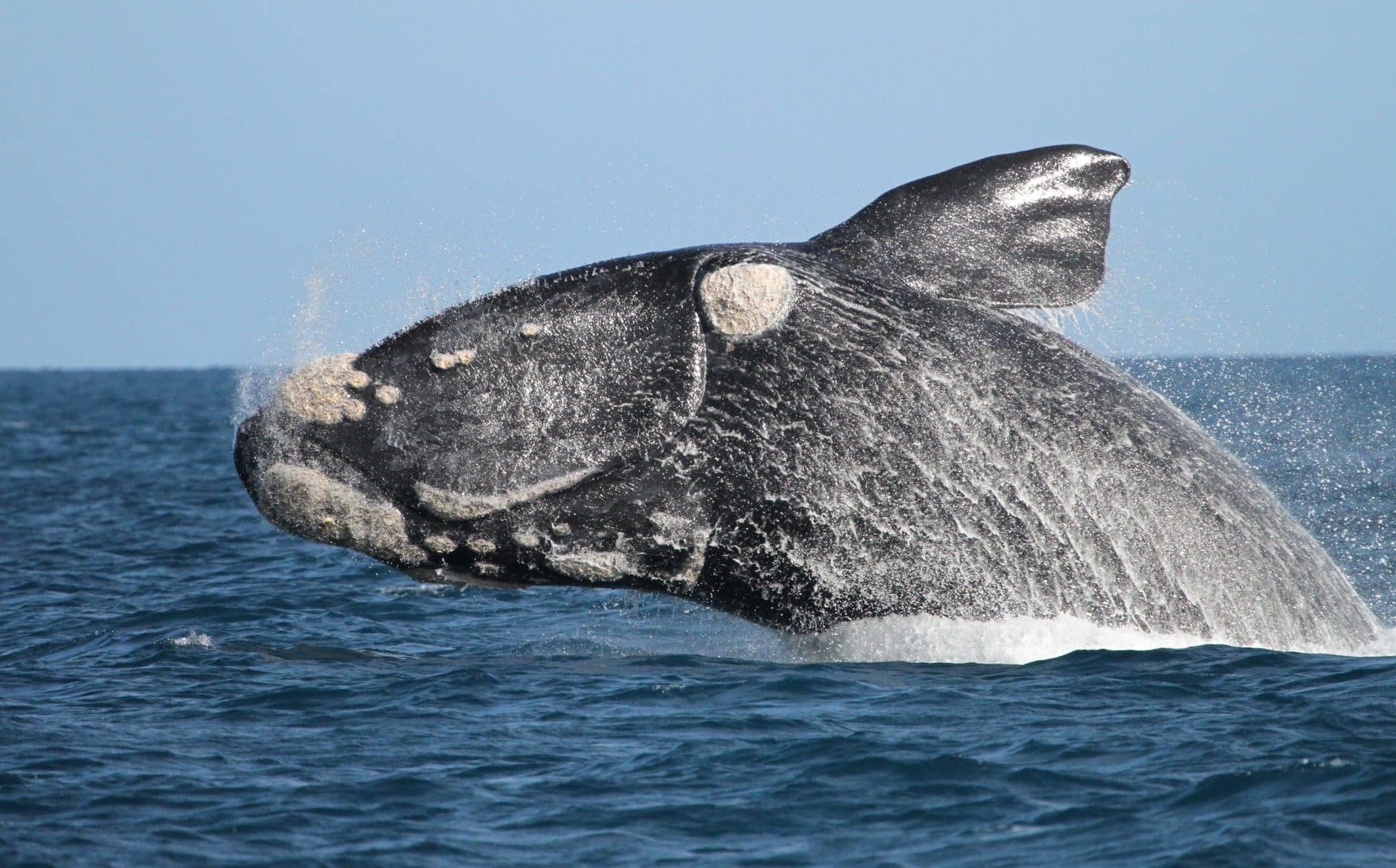
Chile is home to a critically endangered population of southern right whales, with only about 50 mature individuals left. In 2023, PWF’s team recorded two calf deaths linked to human activity, marking a significant setback for the population’s recovery.

Ongoing Research:
In Ecuador and Chile, every sighting of these rare whales is crucial. Our team is conducting vital research on their genetics, toxins, and shifting range to better understand the threats they face and inform conservation efforts.

Solutions from Research
Leveraging PWF data, we’re advocating for stronger protections for the last remaining southern right whales in Chile. An unprecedented surge in large-scale aquaculture threatens the whales with habitat degradation, ocean pollution, and heightened vessel traffic. Our work is focused on driving meaningful change to safeguard their future.

